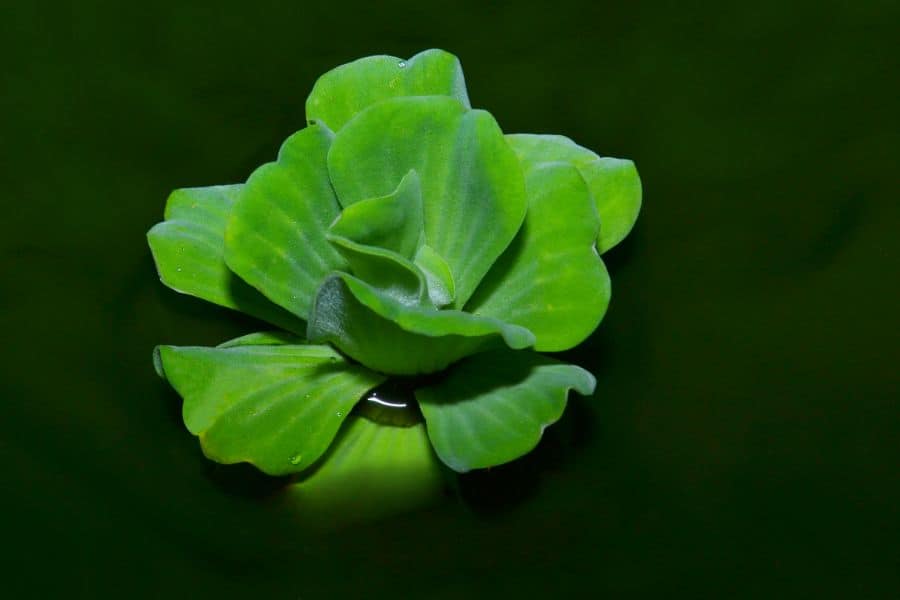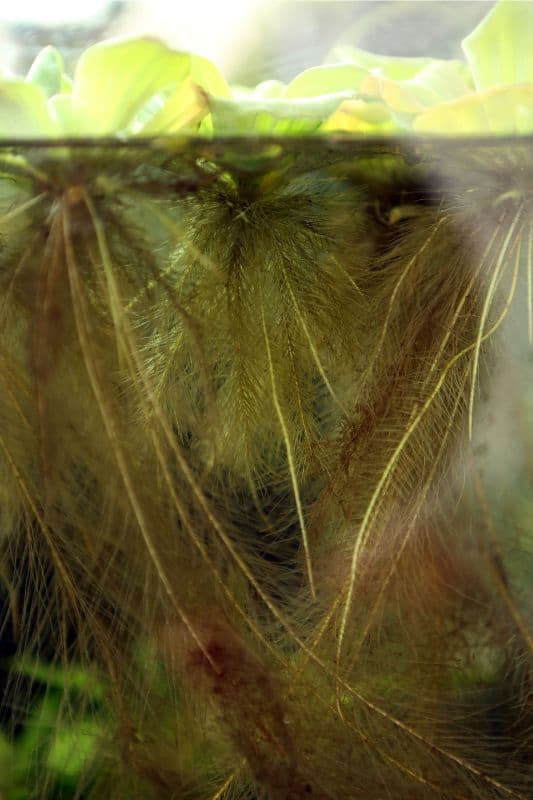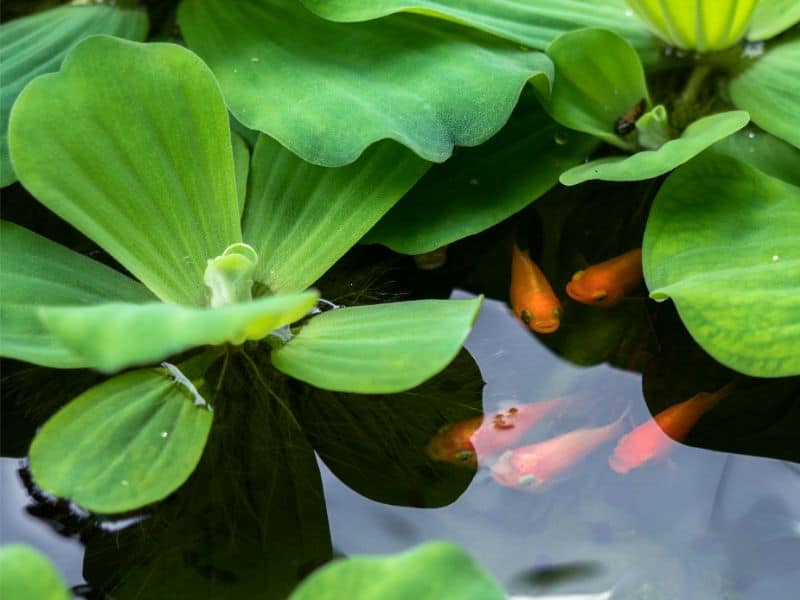With wavy leaves arranged in circular rows of rosette similar to those of a lettuce vegetable, the natural floral beauty of a Water Lettuce (Pistia stratiotes) is one of the reasons why it is popular among aquarists and landscapers around the world.
But despite its global popularity, this floating aquarium plant has been classified as a pest and an invasive species. But why?
Join us in this article as we discuss the biology behind Water Lettuce, the reasons why it is considered bad in some countries and learn the growing techniques that truly makes them a good aquarium plant.
Water Lettuce Biological Characteristics
To understand why Water Lettuce are considered pests and invasive, let us examine its biology and see how their wild resilient features allows them to grow rapidly in any freshwater environment.
No Substrate Requirement
Water Lettuce does not require substrate to grow. Since it is a free-floating plant, it only needs to stay afloat and can survive even in shallow waters.
They typically grow in warm freshwater bodies like lakes, rivers, streams, ponds, and your aquarium. But aside from being a tropical plant, Water Lettuce can also grow in subtropical regions with mild winters and warm summers, giving them a wider range of habitats.
Stolon Rather than True Stems
You may wonder why Water Lettuce floats.
Water Lettuce has no true stems that are often dense and sinks in the water. Instead, they have stolon – a lightweight modified structure that acts and functions just like a genuine stem.
A Water lettuce plant has several stolons. Leaves grow around each stolon, and as they grow, they form a circular pattern similar to the leafy growth of a lettuce vegetable.
On top of their lightweight stolon, their leaves play a significant factor in why they float. Usually measuring a quarter of their 10 to 20 cm average plant diameter, their thick and spongy leaves act as floaters, making the plant more buoyant.
Aside from making them float, the stolons give the plant a higher chance of survival. Opposite to the vertical growth in true stems, the stolons in Water Lettuce grow horizontally, allowing them to grow even in nutrient-poor habitats by spreading and covering a larger space. Imagine their surface vegetation forming a mat similar to those of Frogbit, the difference is that Water Lettuce are larger.
Dual Source of Nutrition
Like other floating aquarium plants, the Water Lettuce is lucky to have two sources of nutrition.
First, their leaves above the water and exposed to air have unlimited access to atmospheric carbon dioxide. Their leaves absorb this gas during photosynthesis and use it for plant metabolism and growth.
Second, being a floating plant does not require them to have true roots to anchor themselves in the substrate. Instead what they have are hairy root-like structures called rootlets. As they are suspended in midwater, these rootlets absorb nutrients directly in the water column.
Combining the atmospheric carbon-absorbing traits of their leaves and the submerged nutrient feeding of their rootlets, Water Lettuce grows relatively fast where it can potentially double its size within a week.
Tolerant to Brackishwater
Water Lettuce is a freshwater aquarium plant. But due to its resilient capacity, it can thrive in a slightly brackish water environment with a salinity of up to 5 ppm. Just for comparison, the salinity of seawater is 35 ppm.
For Water Lettuce to fully bloom and show off its fast-growing traits, the plant should be in a freshwater environment. When placed or accidentally taken to a brackishwater habitat, they may stop growing as they will have difficulty adjusting and absorbing nutrients in the water.
Potentially Invasive
With its adaptive and fast-growing traits, Water Lettuce are fierce competitors for resources and space against other plants.
In the wild, they can overrun other floating plants and occupy the entire surface water blocking the sunlight for submerged plants. It is why Water Lettuce is considered invasive in many countries like Australia, South Africa, and North America. In the US, several states have acknowledged the invasive nature of Water Lettuce that can alter local ecosystems and have banned its possession and cultivation.
Some US states that have prohibited Water Lettuce include Florida, Alabama where it has clogged its waterways, Texas, and North Carolina where this floating plant has been categorized as a Class A Noxious Weed with resistance to most commercially available herbicides. But the good news is that you can still keep Water Lettuce in the aquarium, provided you have secured a permit.
Benefits of Keeping Water Lettuce in the Aquarium
Why give a fuss in securing a permit when a plant has no use for you? For Water Lettuce, they are of great use for your aquarium, and while waiting to get a permit (if required by law in your locality), be aware that they do have benefits, like:
Stabilize Water Chemistry
Do you still remember how the dangling roots of Water Lettuce absorb nutrients directly in the water?
These nutrients are mainly composed of ammonia, nitrites and nitrates. When their levels spike up, they affect the health of your fish. With the nutrient-absorbing roots of Water Lettuce, your water chemistry is guaranteed to be stable.
Supplement Dissolved Oxygen
When Water Lettuce uses up the absorbed nutrients during photosynthesis, they release off oxygen in exchange. While only the roots are submerged, their oxygen production is just enough to supplement the current dissolved oxygen requirement for your fish and other organisms. Do not use Water Lettuce as your primary source of DO.
Provide Shade and Cover
The horizontal growth of Water Lettuce creates a shady environment beneath it, enticing fish (especially babies and other tiny organisms) to swim freely and feel secure.
Furthermore, debris and other suspended particles can be trapped in their dangling roots, making them great food items.
Control Algae Growth
Unwanted algae grows when conditions are conducive, like when the nutrients are high and when there is a constant supply of bright light.
With Water Lettuce, these 2 requirements for algae to grow are non-existent as nutrients are already absorbed by their roots and light is greatly reduced with the blocking of their leaves.
Improved Aesthetics
Water Lettuce greatly improves the aesthetic beauty of your tank in two ways.
First, when you look at your tank sideways, you will see a natural look with some rays of light penetrating the water.
Second, if you’re looking at your tank from above, it will look similar to a pond setting since the beauty of a floating Water Lettuce is similar to those of lilies.
Water Lettuce Planting Procedure
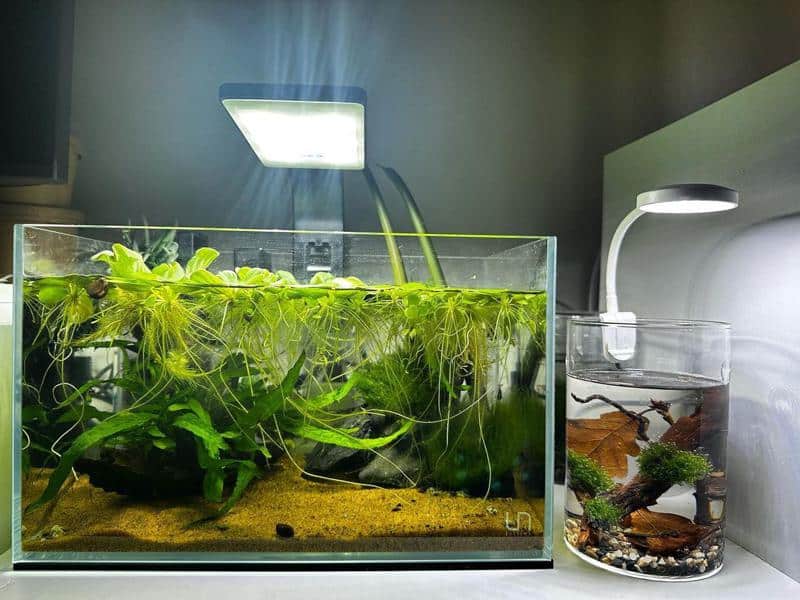
Being a floating aquarium plant, planting Water Lettuce is as easy as placing them on the surface water. But there are things that you need to prepare before stocking Water Lettuce.
Provide Enough Surface Area
Giving your Water Lettuce enough surface area is the key to its successful growth. Use a tank with a large surface area allowing the plant to drift freely.
The fast-growing traits of Water Lettuce can easily cover the entire surface area if you’re using a small tank like a fish bowl.
Foot-Long Water Depth
Aside from the large surface area, tank depth is also crucial for Water Lettuce. Since their roots are long, you need a tank with a minimum depth of at least 12 inches.
If your tank already has a substrate (which is not needed by your Water Lettuce), deduct its thickness, and the remaining water column should be a foot deep at least.
Placing Healthy Plants
Once you have prepared the ideal tank, you can now place your Water Lettuce. Only keep healthy plants with well developed roots. Be sure to check and take off any damaged parts or infested leaves (brown or yellow spots) before stocking them in your tank.
Stocking Density
Never fill the entire tank surface with Water Lettuce since you will have an already overcrowded setup at the beginning. Follow the recommended stocking density for Water Lettuce.
While the number of plants will vary since the diameter between plants will also vary, only fill 30% of your tank surface. In this way, when they double up their size, you still have enough space for light to penetrate.
Create a Surface Boundary
Once Water Lettuce is on the surface, it will drift in all directions, making it unruly. To keep things tidy, you can concentrate your plants on one side by creating a surface boundary. You can do this using a fishing line tied to an aquarium suction cup.
Water Lettuce Growth Requirements
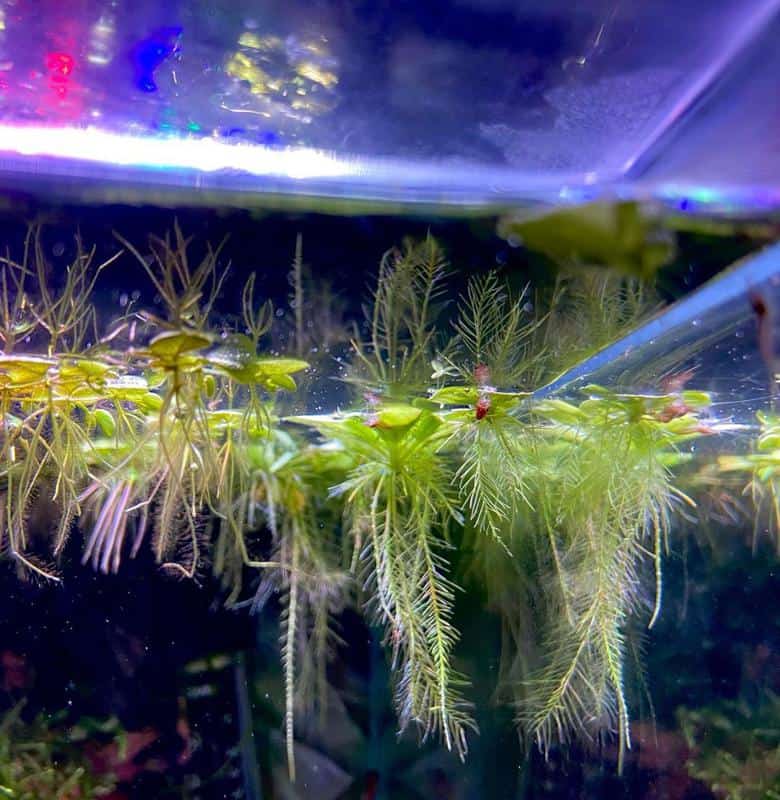
Water Lettuce is easy to care for, making them great aquarium plants for beginners. But it doesn’t mean that you just leave them behind after stocking. In doing so, you will have no way of monitoring their growth. Checking your plants and the water condition from time to time is still important.
Tropical Warm Waters
Water Lettuce grows best in warm waters ranging from 20 to 30 C (68 to 86 F). Although they prefer warm water, they can tolerate colder waters, but expect slow growth.
4 to 6 Hours of Low to Moderate Light Exposure
In keeping your Water Lettuce in an aquarium, you don’t need intense and prolonged exposure to light. Otherwise, they will rapidly grow out of control and live up to their reputation as invasive species.
All your Water Lettuce needs is to expose them anywhere from 4 to 6 hours under low to moderate lighting.
Also Read: Low Light Aquarium Plants
Slightly Alkaline Waters
Water Lettuce love slightly alkaline waters, anywhere from 6.5 – 7.5 pH.
In case the pH decreases and your water becomes acidic, your Water Lettuce will have difficulty absorbing nutrients which leads to slow growth. On the other hand, if the pH increases and your water becomes alkaline, it can lead to plant stress which is manifested by the yellowing of their leaves.
Here is the summary of the growth requirements for Water Lettuce along with other parameters.
| Parameters | Range |
| Substrate | Not required |
| Light | Low to moderate |
| Water flow | Stagnant to Low |
| Temperature | 20 to 30 C (68 to 86 F) |
| pH | 6.5 – 7.5 |
| Hardness | 4 – 12 |
| Fertilizers | Low to Medium |
| CO2 | Low to Medium |
Pruning Procedure
Water Lettuce grows fast and can quickly cover the surface of your tank. With this, trimming may become a frequent chore in keeping a healthy population of Water Lettuce.
Here’s how to properly trim and prune your Water Lettuce:
Focus on the leaves
Never cut the stolon and roots of your Water Lettuce. Only trim their leaves since it is the part that grows large and can potentially cover the entire surface of the tank.
Selective Cutting of Leaves
Don’t just trim the leaves indiscriminately. Identify and only cut those that are damaged, with discoloration and those that are too large.
When cutting, do not just cut the part where it is damaged. Cut the selected leaf from the base of the stolon and be careful not to damage healthy leaves.
Use a Sharp Cutting Tool
Before cutting, you have to consider that the leaves of your Water Lettuce are thick and spongy. With this, you should use a sharp cutting tool like an aquarium scissor or garden shears. The sharp edges of these tools can easily penetrate and cut through the leaves of your Water Lettuce.
Remember that using a blunt tool causes more harm to your plant.
Proper Disposal
Dispose of the cuttings properly, and never throw them in any water body. While the cuttings will no longer grow, they will decompose and can affect the nutrient buildup of nearby aquatic habitats.
Transfer Excess Plants
There will come a point when pruning is no longer sufficient to clear up some space on the surface, especially when your plants have already reproduced and multiplied.
Transferring some of your plants to another tank would do the trick. But still, you need to practice the 30% stocking density and never fill the entire space of your new tank.
Methods of Propagation
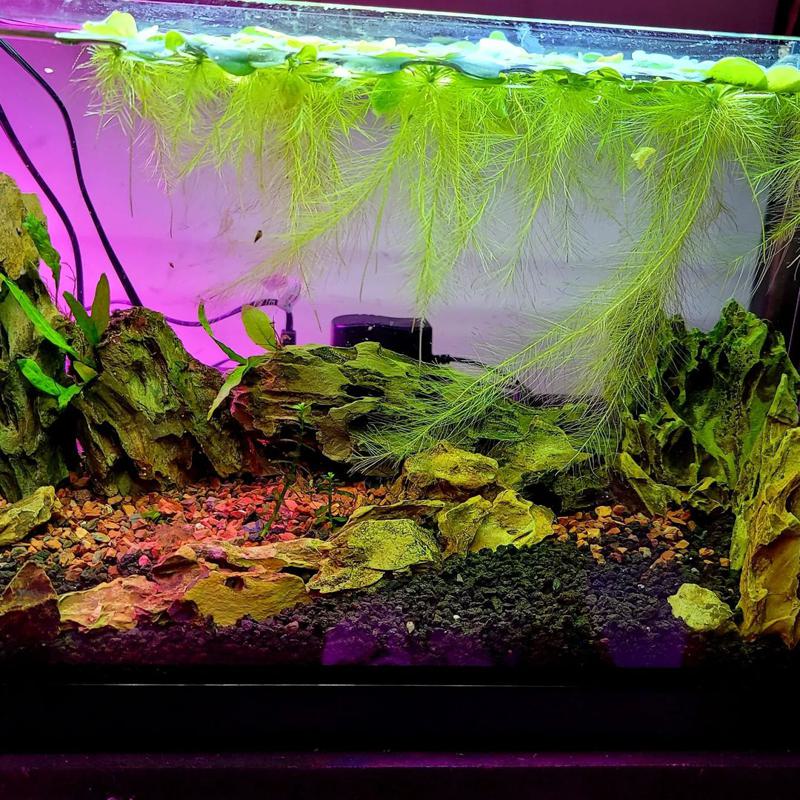
Aside from their fast-growing leaves, have you ever wondered why the number of your Water Lettuce keeps increasing? It is because they reproduce both sexually and asexually.
Asexual Reproduction
When your Water Lettuce matures, it produces a cluster of up to 20 daughter plants at its base. As the daughter plants grow, they start to develop their own roots and leaves up to the point that it detaches from the parent plant and becomes an independent plant.
It only takes 4 to 6 weeks for the daughter plant to mature and start producing a new generation of Water Lettuce. This is the very reason why Water Lettuce can easily invade and cover up the entire surface water.
Sexual Reproduction
The sexual reproduction of Water Lettuce rarely happens in the aquarium, and it only occurs in a pond setting or their wild habitat. Nevertheless, you have nothing to lose in learning the science behind how Water Lettuce reproduces sexually.
Although small and enclosed by a heart-shaped cup, Water Lettuce has flowers. Being a monoecious plant, it has both male and female flowers.
The flowers of a Water Lettuce produce tiny brown seeds. After pollination, either by itself or through insects, the seeds are released and taken by the wind and water. One to two weeks after dispersion, the seeds start to germinate and will grow into a new plant.
Also Read:
FAQs
Is It Possible to Plant Water Lettuce in The Substrate?
The leaves of Water Lettuce are highly buoyant. If you use weights, then you can plant Water Lettuce in the substrate.
But there is no point in using weights for this floating plant. Aside from depriving them of atmospheric carbon dioxide they are used to, you are keeping them away from the light source which they need for photosynthesis. Your Water Lettuce will eventually die.
What Is the Ideal Tank Size for Water Lettuce?
10 gallons or more will do good for Water Lettuce. Make sure it has a large surface area for your Water Lettuce to float and drift freely.
When Should I Trim My Water Lettuce?
Your trimming schedule will depend on how fast your Water Lettuce grows. Most aquarists trim their Water Lettuce once or twice a month.
For a more accurate guide, you can always use their stocking density. Whenever it covers more than 30% of your surface water, then you may trim your Water Lettuce.
Difference Between Dwarf Water Lettuce and Water Lettuce?
Although closely related, everything is smaller in the Dwarf Water Lettuce. It grows slowly and may only reach 2 inches in diameter as compared to the fast-growing traits of Water Lettuce that may reach 6 inches on the average. Also, its leaves are round and curved as compared to the large and flat leaves of Water Lettuce.
Final Thoughts
What we have presented in this article is the science behind why Water Lettuce grows and multiplies fast. While you already know why they are considered invasive in some areas, use this information to your advantage.
Initially, you may start keeping a few Water Lettuce. But as their numbers increase, you may consider turning your hobby into a business with a fast turnaround.
